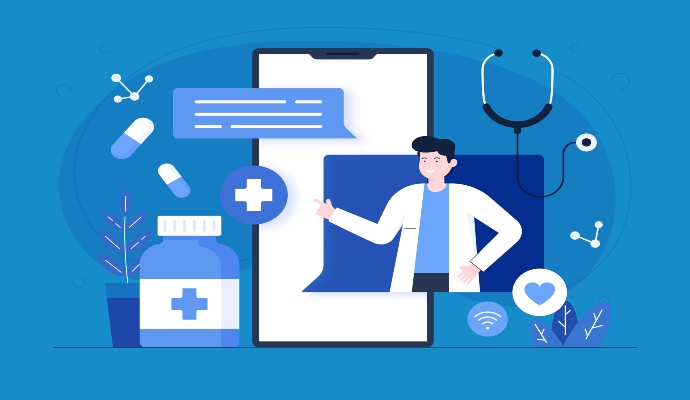Telehealth Bridge Clinic Engages Vulnerable Patients in OUD Treatment
An analysis by UPMC shows that its telehealth bridge clinic effectively engaged vulnerable opioid use disorder patients, extending access to treatment.

Source: Getty Images
- UPMC’s telehealth bridge clinic effectively served the high-risk opioid use disorder (OUD patient population, supporting patient engagement and access, according to new research conducted by the health system.
Published in the Journal of Addiction Medicine, the American Society of Addiction Medicine’s official journal, the study evaluated the efficacy of a bridge clinic that UPMC established following the US Drug Enforcement Administration (DEA) decision to temporarily suspend restrictions on telehealth-enabled buprenorphine treatment.
During the COVID-19 public health emergency (PHE), the DEA lifted the Ryan Haight Act requirement that mandated an initial in-person evaluation before healthcare professionals could prescribe a controlled substance through telehealth, including buprenorphine. After the requirement was lifted, UPMC created a telehealth bridge clinic to offer low-barrier access to substance use disorder treatment.
The clinic allows local treatment providers in Pennsylvania to connect OUD patients with board-certified emergency medicine, toxicology, and addiction medicine physicians via audio-visual technology or the telephone. The physicians conduct remote evaluations, providing eligible patients with buprenorphine and naloxone nasal spray prescriptions.
The study shows that 208 individual patients scheduled appointments at the telehealth bridge clinic from April 27, 2020, to July 31, 2021, with 200 (96 percent) attending their appointments. The clinic was available for patients with any substance use disorder conditions, but OUD patients accounted for 96 percent of attended visits. Most patients (79 percent) scheduled audio-only appointments and were covered by Medicaid (62 percent). About 19 percent were uninsured, and 7 percent had recently been released from jail.
Of the 192 OUD patients who participated in a telehealth appointment for OUD treatment, 96 percent filled a buprenorphine prescription within 30 days, and 77 percent filled two or more prescriptions after that. There was no significant difference in the rate of prescription fills among patients evaluated through video versus audio-only telehealth technology.
“Our model would allow integration of a low-barrier telemedicine bridge clinic into the existing framework of addiction care, including behavioral therapy, social supports, and other in-person medical care,” the researchers wrote. “The scope, reach, efficiency, and scalability of a telemedicine clinic allow for improved cost-effective capacity to treat patients who may not have rapid access to local care.”
The research follows the publication of the Department of Health and Human Services (HHS) final rule that significantly expands access to OUD medications.
Released on February 2, the final rule makes permanent several pandemic-era flexibilities, allowing the provision of unsupervised methadone doses and the use of telehealth to initiate buprenorphine treatment.
Thus, authorized healthcare providers at Opioid Treatment Programs (OTPs) can initiate buprenorphine treatment via telehealth if they determine that an adequate evaluation of the patient can be, or was, accomplished via audio-only or audio-visual telehealth technology.
The rule represents the first substantial changes to the rules governing OTPs in two decades.
However, there have been conflicting research findings regarding the impact of telehealth on OUD care.
While some studies have determined that using telehealth to begin OUD treatment is linked to high retention in treatment and the uptake of telehealth services led to a reduced risk of fatal drug overdose, a study published in early 2023 questions whether telehealth can actually improve OUD care.
For the study, researchers examined telehealth visit claims from the OptumLabs Data Warehouse. The claims spanned a pre-pandemic period from March 14, 2019, to March 13, 2020, and a mid-pandemic period from March 14, 2020, to March 13, 2021. The study population included 11,801 patients who received treatment from 1,768 clinicians.
Researchers found that there were also no reported changes in the initiation of OUD medication between pre- and mid-pandemic periods or OUD-related clinical events among all patients. Further, the total visit volume for OUD for each patient episode stayed stable among clinician groups with high and low telehealth use rates.
Thus, researchers concluded that though telehealth was an effective alternative to in-person care, no evidence suggests telehealth can increase access to or improve the quality of OUD treatment.
